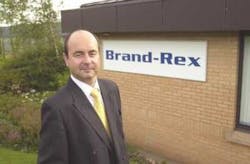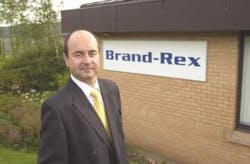Installers working in a Spanish port have completed the first phase of a cabling project that covered one of the largest distances yet for an air-blown fiber system.
The installation covered a new 40-kilometer air-blown fiber LAN for Huelva Harbour in Spain. The first phase was carried out without incurring any downtime on the Huelva network.
Huelva, located on the Iberian Peninsula, is one of the busiest Mediterranean ports and handles both international trade and fishing cargo. It has recently been expanded to increase the size of its entrance canal. Port authorities have subsequently needed a new network to connect the various offices and entry points around the complex.
The Spanish office of Brand-Rex LTD (www.brand-rex.com), based in Glenrothes, Scotland, worked in conjunction with authorized installer ACISA on the project. The project began in 2002 when one of the company's contractors in Spain met with port authority representatives to talk about how to best deal with the LAN system. The site required optical fiber that could cover distances of 7.5 kilometers from point to point.
null
Contractors suggested that the port authority consider an air-blown fiber solution. Through such systems, cables are installed, and fiber is later blown into them.
At the time, Brand-Rex was pre-launching its MicroBlow solution. The plug-and-play system is designed to minimize future interruptions. Contractors said the system could be installed above water level to allow simple access for future changes, and that the job could be handled if they used the 12-fiber cable/6 mm MicroBlo product blown into a 10-mm microduct. The plan would keep quality loss to a minimum, ensuring the network's durability and flexibility when it needed to be upgraded or extended.
The installation presented challenges, given the geographic area covered. Air-blown installations are usually implemented on a smaller scale; air-blown fiber can typically cover about one kilometer, and the contractors realized that Huelva Harbour's 40-kilometers network would be an ambitious project.
"It was like a college campus, only spread out as a port authority," says Colin Dennison, business development manager for Brand-Rex.
Installers planned to cover the large distances by working in a central point and blowing the fiber out in different directions, thereby covering up to 7.5 kilometers at a time.
"You set up the equipment in the center, and blow in one direction half of your cable. Then blow in the other direction, completing the job," says Dennison.
The multi-duct project was launched in January 2002. Tubing was ordered, and that May, installers went to the site and blew in 40 kilometers of 12-fiber/6-mm singlemode cable into the 10-mm MicroBlow ducts.
"We were conscious that longer distances affect quality, and in this instance, by using the 12-fibers cable, we were able to keep quality loss to a minimum," says Dennison.
Contractors will blow in another eight to 10 kilometers of cable during the second phase of the project this winter.
Dennison says the air-blown fiber offered the advantage of good repeatability and reliability. The money-saving aspects will come later as more fiber needs to be blown in. "It's not the same labor costs of pulling in a cable," notes Dennison.
"The up-front, day-one costs are the same as traditional systems, but the second and third cable installations, when required, will be far cheaper than traditional methods," says Dennison.

